- Clone
- 308/3-3 (See other available formats)
- Regulatory Status
- RUO
- Other Names
- CEACAM3, CGM1, CEACAM5, CEA
- Isotype
- Mouse IgG1, κ
- Ave. Rating
- Submit a Review
- Product Citations
- publications
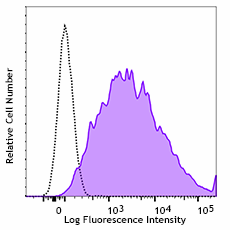
-

Human colon cancer cell line, HT29, was stained with human CD66d/e (clone 308/3-3) A647 (filled histogram) or mouse IgG1, κ A647 isotype control (open histogram). -

Human paraffin-embedded colon tissue slices were prepared with a standard protocol of deparaffinization and rehydration. Antigen retrieval was done with Citrate Buffered 1X (10 mM, pH 6.0) at 95°C for 40 minutes. Tissue was washed with PBS/0.05% Tween 20 twice for five minutes , permeabilized with 0.5% PBST for 15 mintues and blocked with 5% FBS and 0.2% gelatin for 30 minutes. Then, the tissue was stained with 10 µg/mL of Alexa Fluor® 594 anti-Vimentin (Clone O91D3) antibody (green) and Alexa Fluor® 647 anti-CD66d/e (Clone 308/3-3) antibody (red) over night at 4®C. Nuclei were counterstained with DAPI (blue). The image was scanned with a 10X objective and stitched with MetaMorph® software.
| Cat # | Size | Price | Quantity Check Availability | Save | ||
|---|---|---|---|---|---|---|
| 392805 | 25 µg | 128€ | ||||
| 392806 | 100 µg | 306€ | ||||
The 308/3-3 mAb reacts with an antigen epitope shared by CD66d and e. CD66d/e are members of the CEA (carcinoembryonic antigen) family of the Ig superfamily. CD66 plays a role in hemophilic and heterophilic adhesion. CD66d is a major granulocyte receptor mediating recognition and efficient opsonin-independent phagocytosis of CEACAM-binding microorganisms, including Neisseria, Moraxella and Haemophilus species, thus playing an important role in the clearance of pathogens by the innate immune system. Responsible for RAC1 stimulation in the course of pathogen phagocytosis. CD66e molecule is also called CEA or CEACAM5, and is primarily found on epithelial cells. CD66e binds to CD66a, c and e.
Product DetailsProduct Details
- Verified Reactivity
- Human
- Antibody Type
- Monoclonal
- Host Species
- Mouse
- Immunogen
- Recombinant soluble human CEACAM3-Fc produced in HEK293 cells
- Formulation
- Phosphate-buffered solution, pH 7.2, containing 0.09% sodium azide.
- Preparation
- The antibody was purified by affinity chromatography and conjugated with Alexa Fluor® 647 under optimal conditions.
- Concentration
- 0.5 mg/ml
- Storage & Handling
- The antibody solution should be stored undiluted between 2°C and 8°C, and protected from prolonged exposure to light. Do not freeze.
- Application
-
FC, IHC-P - Quality tested
- Recommended Usage
-
Each lot of this antibody is quality control tested by formalin-fixed paraffin-embedded immunohistochemical staining. For immunohistochemistry, a concentration range of 5.0 - 10 µg/ml is suggested. It is recommended that the reagent be titrated for optimal performance for each application.
* Alexa Fluor® 647 has a maximum emission of 668 nm when it is excited at 633 nm / 635 nm.
Alexa Fluor® and Pacific Blue™ are trademarks of Life Technologies Corporation.
View full statement regarding label licenses - Excitation Laser
-
Red Laser (633 nm)
- Product Citations
-
- RRID
-
AB_2749950 (BioLegend Cat. No. 392805)
AB_2749951 (BioLegend Cat. No. 392806)
Antigen Details
- Structure
- Ig superfamily, CEA antigen group, GPI-linked glycoprotein
- Distribution
-
Granulocytes
- Function
- Cell adhesion, neutrophil activation
- Interaction
- CEACAM1, 5,6, SRC and ZPLD1.
- Ligand/Receptor
-
CD66d: CEACAM1, SRC.
CD66e: CEACAM1, 5, 6. - Cell Type
- Granulocytes
- Biology Area
- Immunology
- Molecular Family
- Adhesion Molecules, CD Molecules
- Antigen References
-
- Chen T, et al. 2001. J Biol Chem. 276:17413
- Wang Z, et al. 2016. Mol Clin Oncol. 5:731
- Swords DS, et al. 2016. Onco Targets Ther. 9:7459
- Gene ID
- 1084 View all products for this Gene ID
- UniProt
- View information about CD66d CD66e on UniProt.org
Related Pages & Pathways
Pages
Related FAQs
Other Formats
View All CD66d/e Reagents Request Custom Conjugation| Description | Clone | Applications |
|---|---|---|
| Purified anti-human CD66d/e | 308/3-3 | FC,IHC-P |
| Alexa Fluor® 594 anti-human CD66d/e | 308/3-3 | IHC-P |
| Alexa Fluor® 647 anti-human CD66d/e | 308/3-3 | FC,IHC-P |
Customers Also Purchased
Compare Data Across All Formats
This data display is provided for general comparisons between formats.
Your actual data may vary due to variations in samples, target cells, instruments and their settings, staining conditions, and other factors.
If you need assistance with selecting the best format contact our expert technical support team.
-
Purified anti-human CD66d/e
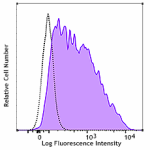
Human colorectal adenocarcinoma cell line HT-29 stained with... 
Human paraffin-embedded colon tissue slices were prepared wi... -
Alexa Fluor® 594 anti-human CD66d/e

Human paraffin-embedded colon tissue slices were prepared wi... 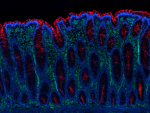
Human paraffin-embedded colon tissue slices were prepared wi... -
Alexa Fluor® 647 anti-human CD66d/e

Human paraffin-embedded colon tissue slices were prepared wi... 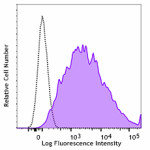
Human colon cancer cell line, HT29, was stained with human C...
 Login / Register
Login / Register 










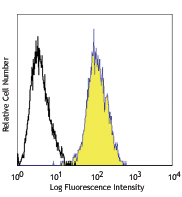
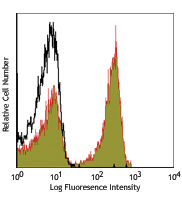

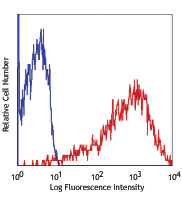



Follow Us